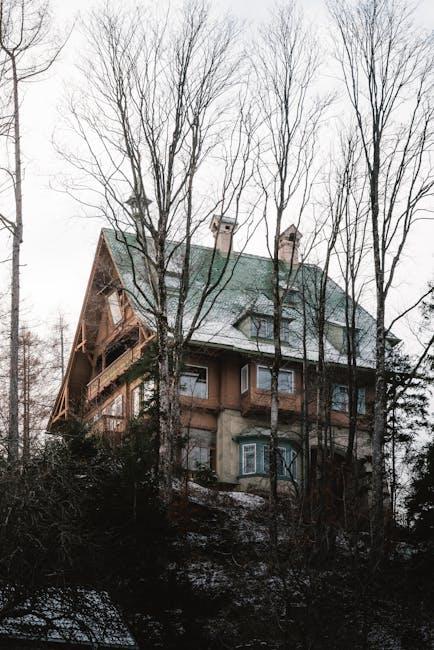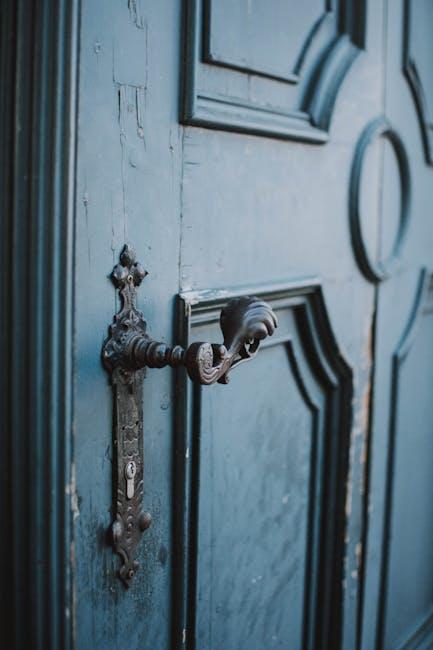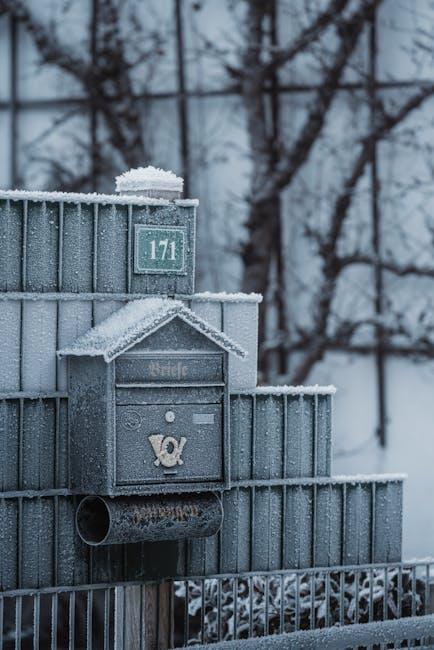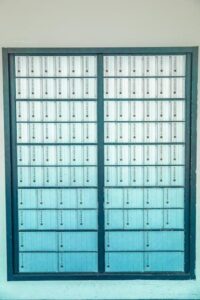As the icy grip of a Minneapolis winter sets in, the reliability of your home’s locks becomes more than just a matter of security-it’s a frontline defense against the harsh elements. Freezing temperatures, snow, and moisture can take a toll on your locks, causing them to seize, freeze, or even break at the worst possible moment. Winterizing your home locks is a practical, proactive step to ensure that when the cold winds blow, your doors remain secure and easy to operate. In this guide, we’ll explore simple yet effective strategies to protect your locks through the frostiest months, keeping your home safe and accessible all winter long.
Table of Contents
- Preparing Your Locks for Minneapolis Winters
- Choosing Weather-Resistant Lock Materials
- Applying Lubricants to Prevent Freezing and Rust
- Installing Protective Covers and Shields
- Regular Maintenance Tips to Ensure Lock Longevity
- Q&A
- In Retrospect

Preparing Your Locks for Minneapolis Winters
Minneapolis winters can be harsh, with freezing temperatures and icy winds that put your locks to the test. To ensure your locks remain functional and secure all season long, start by applying a silicone-based lubricant instead of traditional oil-based ones. Silicone helps repel moisture and prevents rust from forming inside your lock mechanisms. It’s also wise to cover vulnerable exterior locks with protective sleeves or PVC covers to shield against snow and ice accumulation.
Regular maintenance routines will save you from lockouts caused by frozen components. Consider these steps for an effective winter prep:
- Keep locks dry: Wipe off snow or ice immediately to avoid moisture seeping inside.
- Use de-icers cautiously: Opt for lock de-icer sprays rather than harsh chemicals that can damage internal parts.
- Test spare keys: Ensure backup keys are accessible and functional in case your primary locks freeze.
| Preparation Step | Recommended Product | Benefit |
|---|---|---|
| Lubrication | Silicone Spray | Prevents rust and repels moisture |
| Covering Locks | PVC Lock Covers | Protects from ice and snow buildup |
| De-icing | Lock De-Icer Spray | Quickly frees frozen locks safely |

Choosing Weather-Resistant Lock Materials
Opting for lock materials that stand up to Minneapolis’ harsh winter conditions is essential for maintaining smooth operation and security. Brass and stainless steel locks are top choices due to their natural corrosion resistance and durability against moisture and freezing temperatures. Brass, in particular, offers a timeless aesthetic while resisting rust, making it ideal for both exterior and interior applications. Stainless steel is slightly more robust, providing excellent grip and strength without succumbing to the cold or ice buildup, ensuring your locks won’t seize when you need them most.
Consider the following characteristics when selecting lock materials to withstand winter challenges:
- Corrosion resistance: Materials that resist rust prolong the life of your locks.
- Temperature tolerance: Metals that don’t contract or become brittle in cold.
- Low maintenance: Easily serviceable locks save time during winter months.
| Material | Rust Resistance | Cold Durability | Maintenance |
|---|---|---|---|
| Brass | High | Good | Low |
| Stainless Steel | Very High | Excellent | Low |
| Aluminum | Moderate | Moderate | Moderate |
| Zinc Alloy | Low | Poor | High |

Applying Lubricants to Prevent Freezing and Rust
To keep your locks functioning smoothly throughout the harsh Minneapolis winter, applying the right lubricant is essential. This simple step creates a protective barrier against moisture, preventing both freezing and rust that can jam or damage your home’s locks. Opt for lubricants specifically designed for locks, such as graphite powder or silicone-based sprays, which won’t attract dust or grime. Avoid oil-based lubricants like WD-40 for long-term use, as they tend to collect debris and can actually worsen the problem over time.
When applying lubricant:
- Clean the lock first using a soft brush or compressed air to remove dirt.
- Insert the lubricant nozzle carefully into the keyhole or lock mechanism.
- Spray sparingly, ensuring an even coat inside the lock.
- Operate the key gently several times to distribute the lubricant evenly.
| Lubricant Type | Benefits | Best Use |
|---|---|---|
| Graphite Powder | Dries quickly, no residue | Exterior locks, keyholes |
| Silicone Spray | Water-repellent, smooth action | Deadbolts, sliding locks |
| Oil-based (WD-40) | Initial cleaning, short-term use | Avoid long-term application |

Installing Protective Covers and Shields
When the cold Minneapolis winter sets in, metal locks are especially vulnerable to the numbing effects of frost and ice. One proactive step is installing protective covers or shields that act as barriers against the elements. These devices, often made from durable plastic or rubber, create a microclimate around the lock mechanism, preventing moisture buildup and freezing temperatures from directly impacting the lock. Think of these covers as cozy sweaters for your locks. Not only do they help maintain smooth functionality, but they also extend the lifespan of your locking hardware.
When selecting covers, consider features such as:
- Weather resistance and durability
- Compatibility with your existing lock types
- Ease of installation and removal
For areas with heavy snowfall or wind, shield attachments with flaps or extended edges provide an extra layer of defense. Here’s a simple comparison table to guide your choices:
| Type | Material | Benefits |
|---|---|---|
| Snap-on Covers | Rubber or Silicone | Flexible, easy to fit, water-resistant |
| Metal Shields | Aluminum or Steel | Highly durable, windproof |
| Custom Guards | Mixed Materials | Tailored fit, superior protection |

Regular Maintenance Tips to Ensure Lock Longevity
To keep your locks functioning smoothly through the harsh Minneapolis winters, regular upkeep is crucial. Start by lubricating the keyholes and bolts with a graphite-based lubricant instead of oil, as oils can thicken and freeze in low temperatures. Also, inspect weatherstripping around doors to prevent moisture from seeping inside lock mechanisms, which can cause rust or freezing. Regularly cleaning the locks with a soft cloth will remove dirt and debris that may accumulate over time, ensuring that your keys turn effortlessly.
Another essential practice is to check and tighten loose screws and mounting plates on your locksets, which can impact the alignment and smooth operation of the locking components. For added winter protection, consider installing protective covers or shields designed specifically for exterior locks to guard against snow buildup. Below is a quick maintenance checklist to help you stay on track:
- Apply graphite lubricant every 3 months
- Clean exterior locks monthly
- Inspect weatherstripping seasonally
- Tighten loose hardware quarterly
- Install lock covers before heavy snowfall
| Maintenance Task | Recommended Frequency |
|---|---|
| Lubrication | Every 3 Months |
| Cleaning | Monthly |
| Hardware Inspection | Quarterly |
| Install Protective Covers | Before Winter |
Q&A
Q&A: How to Winterize Your Home Locks in Minneapolis
Q1: Why is winterizing my home locks important in Minneapolis?
A1: Minneapolis winters are known for their extreme cold, snow, and icy conditions. Moisture and freezing temperatures can cause locks to freeze, seize, or become difficult to operate, potentially locking you out or damaging your door security. Winterizing your locks helps ensure smooth functionality and avoids inconvenient lockouts during harsh weather.
Q2: What are the common problems Minneapolis homeowners face with their locks in winter?
A2: The biggest issues include frozen locks, rust from trapped moisture, stiff or jammed keys, and corrosion caused by road salt and ice melt chemicals. These factors can lead to keys getting stuck or locks malfunctioning, making it hard or impossible to unlock your doors when you need them most.
Q3: How can I prevent my locks from freezing?
A3: To prevent freezing, regularly lubricate your locks with a graphite-based or silicone-based lubricant designed for locks. Avoid oil-based lubricants in winter as they can attract dirt and freeze. Additionally, try to keep moisture away from locks-wipe down your locks after snow or rain and consider using lock covers or weatherproofing strips.
Q4: Can I use any lubricant to service my locks?
A4: No, it’s best to avoid generic oil or WD-40 as they can gum up or freeze inside the lock mechanism. Instead, opt for a dry lubricant like graphite powder or a silicone spray specifically made for locks. These lubricants protect without attracting dust or freezing in cold temperatures.
Q5: How often should I winterize my locks?
A5: Ideally, prepare your locks at the start of the winter season to prevent issues before the weather gets harsh. Inspect and lubricate monthly if severe weather persists, especially after heavy snow, freezing rain, or ice storms.
Q6: What should I do if my lock is already frozen?
A6: Gently warm the key with your hands or a warm cloth before inserting it. Avoid using excessive force that might break the key. You can also try a commercial lock de-icer or apply a small amount of lubricant to thaw the lock. If the problem persists, contact a locksmith to avoid damaging the lock.
Q7: Are there any lock types better suited for Minneapolis winters?
A7: Stainless steel and brass locks resist rust and corrosion better than some other metals. High-quality deadbolts designed for outdoor use often withstand freezing temperatures more effectively. Consider upgrading to weather-resistant locks if you experience recurrent issues.
Q8: Besides lubricating, what else can I do to protect my locks during winter?
A8: Installing door sweepers and weatherstripping can reduce wind and moisture exposure. Keep entrances clear of snow and ice to prevent water infiltration. Covering lock cylinders with weatherproof caps can also shield them from the elements.
Q9: When should I call a professional locksmith for winter lock care?
A9: If your lock is damaged, jammed, or repeatedly freezes despite your winterization efforts, it’s time to call a locksmith. Professionals have the tools and expertise to repair, replace, or upgrade locks to ensure reliable operation through heavy Minneapolis winters.
Winterizing your home locks is a simple yet crucial step for Minneapolis residents to maintain security and convenience when the mercury drops. With a little care, your locks will welcome you inside smoothly, no matter how cold it gets outside.
In Retrospect
As the frosty winds begin to weave through Minneapolis streets and the first snowfall gently blankets your neighborhood, taking the time to winterize your home locks is more than just a practical task-it’s a crucial step toward safeguarding your sanctuary. By preparing your locks for the cold months ahead, you’re not only preventing frustrating freeze-ups but also ensuring peace of mind throughout the season. So, whether you’re a seasoned homeowner or new to the Twin Cities’ winter rhythms, remember that a little lock care now can unlock a warmer, worry-free winter tomorrow. Stay safe, stay secure, and let your home be a cozy refuge against the Minnesota chill.



